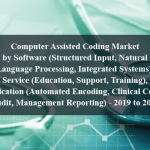OVERVIEW
The Enteral Feeding Devices Market is projected to grow significantly from USD 3.5 billion in 2024 to an estimated USD 6.1 billion by 2029, reflecting a CAGR of 12.0% during the forecast period. Enteral feeding devices deliver nutrients directly into the gastrointestinal tract in patients who are unable to consume food orally. These devices include feeding pumps, tubes, and accessories. The increasing prevalence of chronic diseases, growing aging population, and advancements in feeding devices are driving the market’s growth.
The market’s expansion is also supported by rising healthcare expenditure, increased awareness of enteral nutrition, and the integration of advanced technologies in feeding devices. However, challenges such as high costs of feeding devices, stringent regulatory requirements, and the risk of complications such as infections and tube displacements need to be addressed to sustain market growth.
Geographically, North America and Europe dominate the enteral feeding devices market due to their advanced healthcare infrastructure, significant investments in healthcare, and high adoption rates of innovative feeding technologies. The Asia Pacific region is also expected to witness substantial growth, driven by increasing healthcare expenditure, growing awareness of enteral nutrition, and the expanding healthcare sector.
Market Dynamics
Drivers:
The primary driver of the Enteral Feeding Devices Market is the increasing prevalence of chronic diseases. Chronic conditions such as cancer, neurological disorders, and gastrointestinal diseases often result in patients being unable to consume food orally, necessitating the use of enteral feeding devices to ensure adequate nutrition. The rise in the aging population, coupled with the increasing incidence of chronic diseases, has led to a growing demand for effective nutritional support solutions. Enteral feeding devices offer several advantages, including improved patient outcomes, reduced risk of malnutrition, and enhanced quality of life. These benefits make enteral feeding devices an attractive option for both patients and healthcare providers. Additionally, advancements in feeding device technology, such as the development of user-friendly and portable feeding pumps, are enhancing the efficacy and convenience of enteral feeding, contributing to market growth.
Another significant driver is the growing awareness of the benefits of enteral nutrition. Enteral nutrition is increasingly recognized as a crucial component of patient care, particularly in critical care and long-term care settings. It provides essential nutrients directly to the gastrointestinal tract, promoting better absorption and reducing the risk of complications associated with parenteral nutrition. The integration of advanced technologies, such as smart feeding pumps and sensor-based monitoring systems, is further enhancing the capabilities of enteral feeding devices. These technologies enable precise control of nutrient delivery, real-time monitoring of feeding parameters, and early detection of potential complications. The rising preference for enteral nutrition and the continuous advancements in feeding device technologies are driving the growth of the enteral feeding devices market.
Key Opportunities
The Enteral Feeding Devices Market presents numerous opportunities for growth and innovation, particularly in the development and integration of advanced technologies. One prominent opportunity lies in the increasing use of smart feeding pumps. Smart feeding pumps are equipped with digital tracking and connectivity features, enabling real-time monitoring of nutrient delivery and adherence. These devices can communicate with mobile apps and healthcare systems, providing valuable data for personalized nutrition plans and improving patient outcomes. The integration of smart technologies with enteral feeding devices is expected to drive market growth by enhancing the safety, efficiency, and convenience of enteral nutrition.
The growing focus on home healthcare presents another lucrative opportunity for the enteral feeding devices market. Home healthcare is becoming increasingly popular due to its cost-effectiveness, convenience, and ability to improve patient outcomes. Enteral feeding devices that can be easily used in home settings, such as portable feeding pumps and user-friendly feeding tubes, are in high demand. These devices enable patients to receive adequate nutrition in the comfort of their homes, reducing the need for hospital visits and enhancing their quality of life. Vendors that invest in the development of home healthcare-compatible enteral feeding devices are well-positioned to capitalize on this market trend.
Restraints:
One of the significant restraints in the enteral feeding devices market is the high cost of feeding devices. The development and deployment of advanced feeding technologies, such as smart feeding pumps and sensor-based monitoring systems, require substantial investments in research, equipment, and training. The high upfront costs and ongoing maintenance expenses can be a barrier to adoption, particularly for small and medium-sized healthcare facilities with limited budgets. Additionally, the cost of consumables and replacement parts used in feeding devices further increases the total cost of ownership. To overcome this restraint, vendors need to offer cost-effective solutions and flexible pricing models that cater to the diverse needs of healthcare providers.
Stringent regulatory requirements and the risk of complications pose another challenge for the enteral feeding devices market. Feeding devices and their associated technologies must undergo rigorous validation and approval processes to ensure their safety, efficacy, and reliability. Compliance with regulatory standards, such as the FDA’s premarket approval (PMA) and the European Union’s Medical Device Regulation (MDR), is essential for market entry and commercialization. The risk of complications, such as infections and tube displacements, further complicates the regulatory landscape and can lead to serious health complications for patients. Ensuring compliance with regulatory requirements and maintaining high-quality standards is critical for the successful deployment and operation of enteral feeding devices. Vendors must navigate these regulatory challenges and invest in quality assurance to meet the stringent requirements of the healthcare industry.
Regional Information:
- North America
North America remains a significant market for enteral feeding devices, characterized by advanced healthcare infrastructure, high adoption rates of innovative feeding technologies, and substantial investments in healthcare research and development. The region’s strong presence of leading medical device manufacturers and the high focus on enhancing patient care drive market growth. The increasing prevalence of chronic diseases, such as cancer and neurological disorders, is propelling the adoption of enteral feeding devices in the region. Furthermore, stringent regulatory requirements and the need for robust nutritional support solutions encourage healthcare providers to invest in advanced feeding technologies. However, the high cost of feeding devices and regulatory complexities remain challenges that need to be addressed to fully capitalize on the market potential.
- Europe
Europe leads in the adoption of enteral feeding devices, driven by stringent regulatory requirements, significant investments in healthcare infrastructure, and a strong commitment to improving patient outcomes. The region’s focus on innovation and technological advancement fuels the demand for advanced feeding solutions. Countries like the UK, Germany, and France are at the forefront of implementing enteral feeding technologies to enhance nutritional support capabilities and ensure compliance with regulatory standards. The European Union’s regulations, such as the Medical Device Regulation (MDR) and the In Vitro Diagnostic Regulation (IVDR), mandate stringent data protection and quality assurance measures, further driving market growth. However, economic uncertainties and the complexity of regulatory compliance necessitate strategic planning and risk management to navigate the market landscape effectively.
- Asia Pacific
The Asia Pacific region is expected to witness the highest growth rate in the enteral feeding devices market due to rapid digital transformation, increasing healthcare expenditure, and the expanding healthcare sector. Countries like China, India, and Japan are investing heavily in enteral feeding solutions to support business growth and enhance nutritional support capabilities. The region’s expanding middle class and rising disposable incomes are also contributing to the increasing adoption of enteral feeding devices in various sectors such as hospitals, clinics, and home healthcare settings. Governments in the region are implementing initiatives to promote digitalization and support the growth of the healthcare economy, further driving market growth. However, challenges related to regulatory compliance, fluctuating economic conditions, and the need for skilled healthcare professionals necessitate localized strategies and market insights for successful market penetration.
Recent Developments:
In September 2022, Cardinal Health, Inc. (US) announced the partnership with Kinaxis (Canada) to enhance the Kinaxis RapidResponse Platform used for supply chain agility and medical product visibility.
In November 2022, Boston Scientific signed an agreement for the acquisition of Apollo Endosurgery, Inc.,. This agreement includes devices, which are used during endoluminal surgery (ELS) procedures, to close gastrointestinal defects, manage gastrointestinal complications, and aid in weight loss for patients suffering from obesity.
Key market Players:
Frequently Asked Questions
1) What is the projected market value of the Enteral Feeding Devices Market?
– The Enteral Feeding Devices Market is expected to reach an estimated value of USD 6.1 billion in revenue by 2029.
2) What is the estimated CAGR of the Enteral Feeding Devices Market over the 2024 to 2029 forecast period?
– The CAGR is estimated to be 12.0% for the Enteral Feeding Devices Market over the 2024 to 2029.
3) Who are the key players in the Enteral Feeding Devices Market?
– The primary drivers for the Enteral Feeding Devices Market include the increasing prevalence of chronic diseases, the growing awareness of the benefits of enteral nutrition, and advancements in feeding device technology. These factors are contributing to the rising demand for enteral feeding solutions. The integration of smart technologies, such as digital tracking and sensor-based monitoring systems, is also driving market growth.
5) What are the restraints and challenges in the Enteral Feeding Devices Market?
– The high cost of feeding devices and stringent regulatory requirements are significant challenges in the market. These factors can limit the adoption of advanced feeding technologies. Additionally, the risk of complications, such as infections and tube displacements, and ensuring compliance with regulatory standards poses challenges that need to be addressed to ensure effective and secure nutritional support operations.
6) What are the key applications and offerings of the Enteral Feeding Devices Market?
– Enteral feeding devices are essential for providing effective nutritional support to patients who are unable to consume food orally. They ensure precise and controlled delivery of nutrients, improving patient outcomes by reducing the risk of malnutrition and enhancing the quality of life. These devices are crucial in settings such as hospitals, clinics, home healthcare, and long-term care facilities, supporting advanced feeding techniques and enhancing the efficiency of patient care. Additionally, they play a vital role in the management of chronic diseases and critical care nutrition.
7) Which region is expected to drive the market for the forecast period?
– Asia pacific is expected to have the highest market growth from 2024 to 2029
Why Choose Us?
Insights into Market Trends: Global Market Studies reports provide valuable insights into market trends, including market size, segmentation, growth drivers, and market dynamics. This information helps clients make strategic decisions, such as product development, market positioning, and marketing strategies.
Competitor Analysis: Our reports provide detailed information about competitors, including their market share, product offerings, pricing, and competitive strategies. This data can be used to inform competitive strategies and to identify opportunities for growth and expansion.
Industry Forecasts: Our reports provide industry forecasts, which will inform your business strategies, such as investment decisions, production planning, and workforce planning. These forecasts can help you to prepare for future trends and to take advantage of growth opportunities.
Access to Industry Experts: Our solutions include contributions from industry experts, including analysts, consultants, and subject matter experts. This access to expert insights can be valuable for you to understand the market.
Time and Cost Savings: Our team at Global Market Studies can save you time and reduce the cost of conducting market research by providing comprehensive and up-to-date information in a single report, avoiding the need for additional market research efforts.












